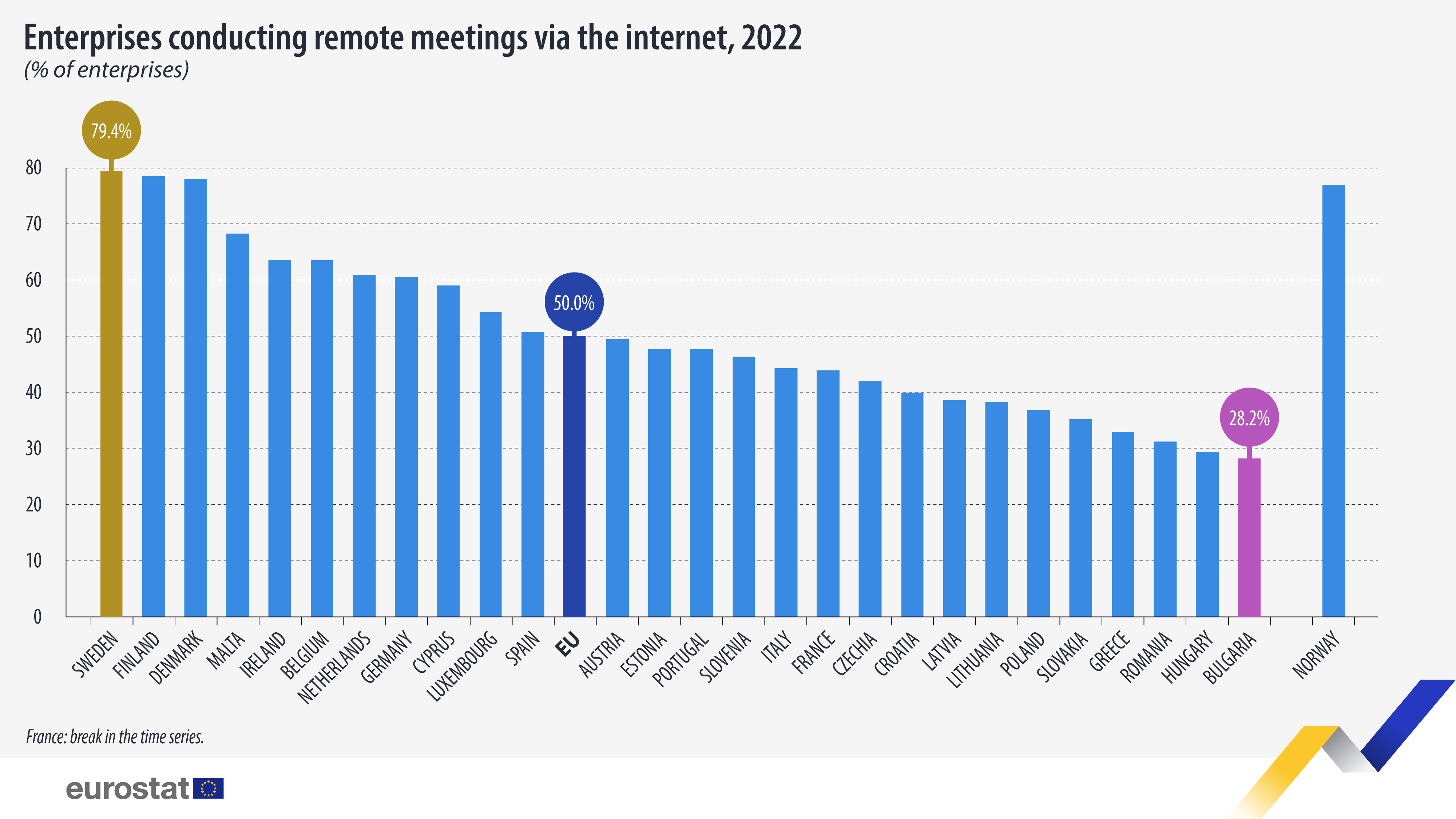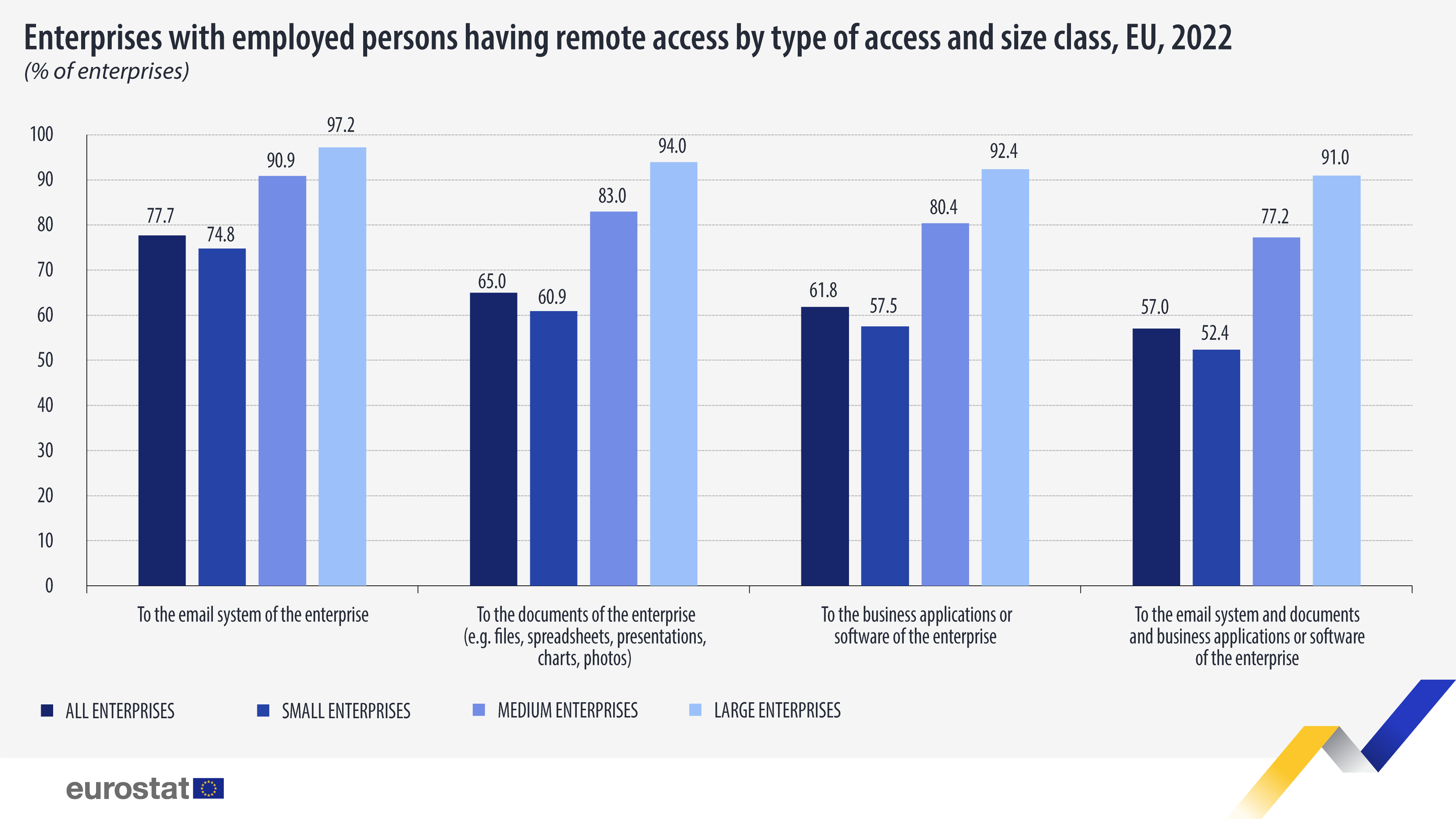June 13, 2023
The COVID-19 pandemic changed work models and led many enterprises to turn to virtual meetings to bridge the physical distance and maintain their businesses.
In 2022, in the EU, 50% of enterprises with 10 or more employees or self-employed persons conducted remote meetings via the internet. Among the EU members, there was a large variation in the percentage of enterprises that used this feature. The largest shares were registered in Sweden (79.4%) and Finland (78.5%), followed by Denmark (78.0%), Malta (68.3%) and Ireland (63.6%).
At the opposite side of the scale, the lowest shares were recorded in Bulgaria (28.2%), Hungary (29.4%), Romania (31.2%), Greece (32.9%) and Slovakia (35.2%).
Mostly large enterprises offered access to remote working
Statistical data on remote access aims to measure the technological readiness of enterprises to make it possible for their employees to work remotely by giving them remote access to three types of enterprise resources: to the email system, to documents and to business applications or software of the enterprise.
In 2022, in the EU, almost 6 out of 10 enterprises (57.0%) with 10 or more employees or self-employed persons offered all three types of remote access to their employees.
When it comes to the size of the enterprises, 91.0% of large enterprises (250 or more employees or self-employed persons) offered all three types of remote access to their employees, while the same happened in 77.2% of medium enterprises (from 50 to 249 employees or self-employed persons) and 52.4% of small enterprises (from 10 to 49 employees or self-employed persons).
Large enterprises led in all types of remote access. Almost all large enterprises offered remote access to the email system of the enterprise (97.2%), to documents of the enterprise (e.g. files, spreadsheets, presentations, charts, photos) (94.0%) and to business applications or software of the enterprise (e.g. access to accounting, sales, orders, Customer Relationship Management (CRM)systems) (92.4%).
As for medium enterprises, 90.9% gave their employees remote access to the email system, 83.0% to the documents of the enterprise and 80.4% to the business applications or software of the enterprise.
Comparatively, small enterprises provided remote access to a lesser extent, since 74.8% of them gave their employees remote access to email, 60.9% to documents and 57.5% to business applications or software of the company.
Source: Eurostat
Legal Notice: The information in this article is intended for information purposes only. It is not intended for professional information purposes specific to a person or an institution. Every institution has different requirements because of its own circumstances even though they bear a resemblance to each other. Consequently, it is your interest to consult on an expert before taking a decision based on information stated in this article and putting into practice. Neither Karen Audit nor related person or institutions are not responsible for any damages or losses that might occur in consequence of the use of the information in this article by private or formal, real or legal person and institutions.








